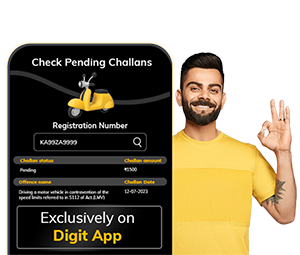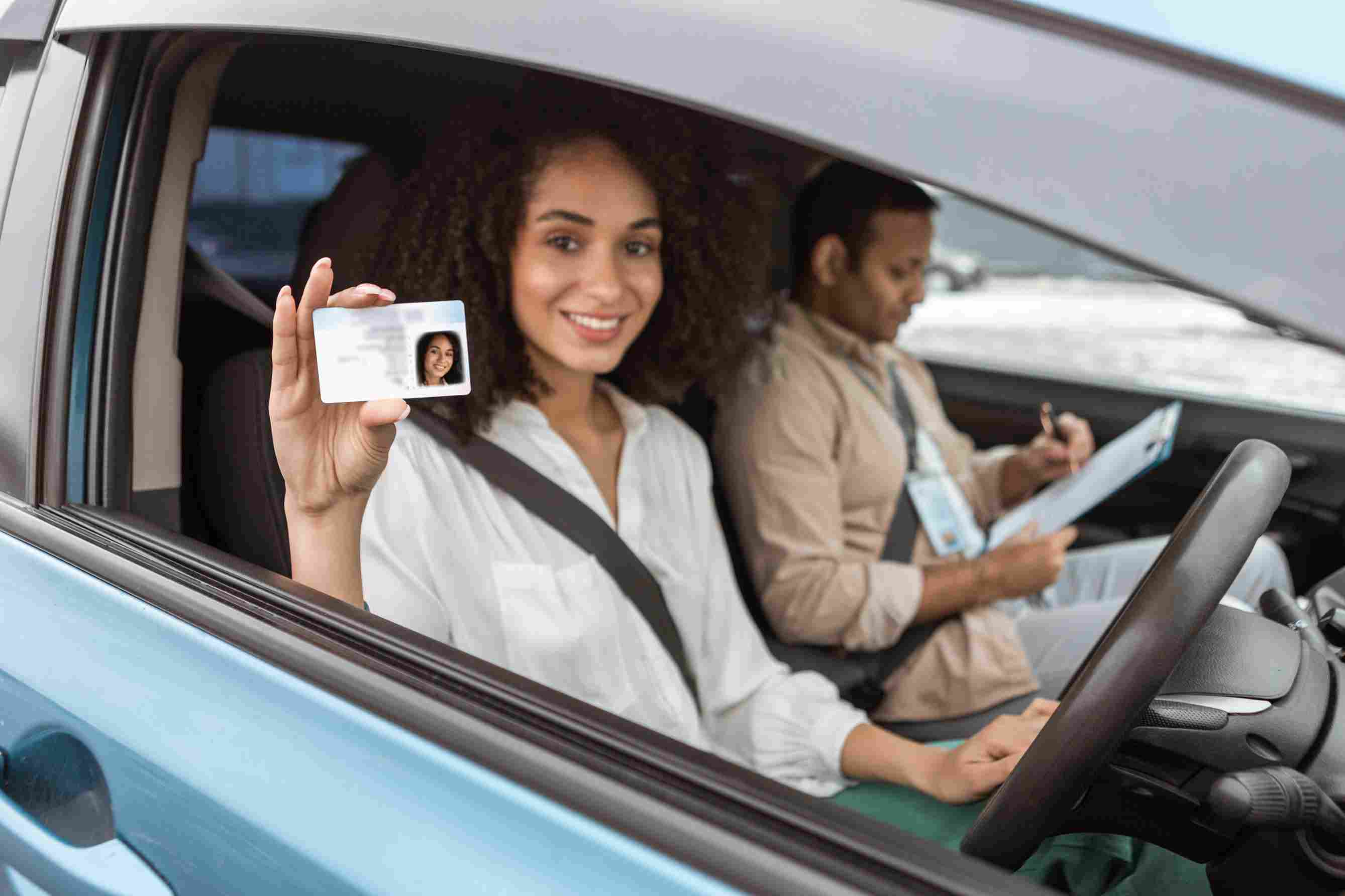
Check Pending Challans
Get the List of Challans Online
Download the Digit App
Download the Digit App
LMV Meaning in Driving Licence, Vehicle Types & How to Apply in 2025?

A piece of news from December 2022 confirmed that approximately 5.3 crore private light motor vehicles and more than 1 lakh personal two-wheelers over 15 years old were on the Indian streets. The demand for the purchase of light motor vehicles has been increasing every year as India witnesses more buying and selling of cars.
Regional Transport Office or RTO has divided vehicles into two broad categories - Light Motor Vehicle (LMV) and Heavy Motor Vehicle (HMV), where LMV belongs to the non-transport class.
Read along to learn more about LMVs.

Table of Contents

What is a Light Motor Vehicle (LMV)?
A light motor vehicle (LMV) does not serve any commercial purpose. If you have an LMV licence, you have the permit to drive light motor vehicles. These include jeeps, cars, auto-rickshaws, taxis, etc. However, to receive an LMV licence, you must meet the eligibility criteria and pass the driving test.
LMVs have a gross vehicle weight of not more than 7500 kg. LMVs have a smaller engine capacity which is around 50cc or less. Light motor vehicles constitute vehicles with black letters on a white number plate.
Which Type of Driving Licence is used for LMV?
The types of driving licences used for light motor vehicles are as follows:
1. LMV-NT (Light Motor Vehicle - Non-Transport): LMV-NT is the first licence category for light motor vehicles. Here are the things you must keep in mind:
- Individuals driving light motor vehicles get a permanent driving licence under this category. However, you must apply for a learner's licence before obtaining a permanent driving licence.
- Under the light motor vehicle licence category, you get permission to drive vehicles for personal purposes only.
2. LMV-TR (Light Motor Vehicle - Transport): It is another category of licence used for LMV and is called LMV-TR.
- You can drive both private and transport vehicles. These include - cars, jeeps, delivery vans, taxis, etc.
- Individuals driving under this category also get a permanent driving licence.
Furthermore, the applicant's minimum age must be 18 years for both of these licences. If you are below 18 years, you can be entitled to legal compensation.
What is the Importance of Having an LMV Licence?
In India, RTO issues a driving licence depending on your vehicle class. Having an LMV licence is important because of several reasons:
- It serves as valid identity proof.
- It is a permit that will let you drive vehicles on the road without any restrictions.
- Acquiring an LMV licence ensures that the Government authorises you as a licenced and skilled driver.
What Are the Benefits of Having an LMV Licence?
Apart from being a mandatory legal requirement to drive a light motor vehicle on the road, here are some benefits of having an LMV licence:
- In India, an individual holding an LMV-NT licence can drive an omnibus, provided the gross vehicle weight must not exceed 7500 kilograms as per transport section 2(21).
- You can utilise the LMV licence for personal identification and use the licence in place of your other identity documents such as your Aadhar card, passport etc.
Difference Between LMV and MCWG in Driving Licence
In India, a permanent licence has many categories. Two major categories of them are LMV and MCWG.
LMV stands for Light Motor Vehicle, which mainly includes cars, jeeps, and vans used for personal purposes. The LMV licence authorises a person to drive a vehicle with a maximum weight of 3,500 kg.
On the other hand, MCWG refers to motorcycles with Gear, and this category consists of motorcycles and scooters that have manual transmission. This licence allows a person to ride a motorcycle or scooter, especially those above 50cc.
What is the Procedure to Get LMV Licence in India?
One can obtain an LMV Licence by passing the tests at an RTO in India. Follow these steps to get an LMV licence:
- Step 1: Navigate to Sarathi Parivahan's official portal and open an account.
- Step 2: Choose the LMV licence application.
- Step 3: Fill out the required details and upload the necessary documents.
- Step 4: Following the submission, pay the required fees via your payment of choice.
- Step 5: Collect a printout of the form.
- Step 6: Go to the designated RTO on the given date for the test.
After passing the test, the licence is delivered via speed post, and a soft copy is sent via email. The online process is much quicker than the offline process.
Eligibility Criteria for Obtaining LMV Driving Licence
The various eligibility criteria for obtaining an LMV Licence in India are as follows:
The minimum age limit for private and commercial LMV licences is 18 years. However, some states have set the minimum age for commercial DL as 20 years.
You need to pass the driving test set by the RTO to be eligible to obtain the licence.
You must also pass a written exam to prove your traffic signs and signals knowledge.
Valid ID, address, and age-proof documents are a must.
Make sure the required fees for the test have already been paid.
Ensure you are physically fit, have proper eyesight, and are free of any serious medical conditions that can hamper your driving.
You need to clear additional fitness tests for a commercial driving licence.
Documents Required for LMV Driving Licence in India
The necessary documents required for a LMV Driving Licence are as follows:
LMV Licence application form
Age proof (could be Aadhaar, PAN card, Birth Certificate)
3 passport-sized photographs
Medical Fitness Certificate
Pass certificate of written exam
In case of any additional requirements, it is advisable to check with the official portal of the State RTO.
What Is the List of Vehicles Under LMV?
Following is the light motor vehicle list:
- Motor cars
- Auto-rickshaws
- Vans
- Jeeps
- Taxis
- Delivery Vans
- E-cart
- E-Rickshaw
As per news from last year, The Minister for Road Transport & Highways made a Suo Moto Statement in the Parliament proposing a "Vehicle Scrapping Policy." India has about 51 lakh Light Motor Vehicles older than 20 years and 34 lakh Light Motor Vehicles older than 15 years. Older motor vehicles pollute the environment and pose risks to road safety.
The Ministry of Road Transport and Highways introduced the Voluntary Vehicle-Fleet Modernisation Program or "Vehicle Scrapping Policy" to enhance a clean and safe environment and ensure rider safety. It is an Eco-System for phasing out polluting and dangerous vehicles. Moreover, if you are driving a light motor vehicle, you must be conversant with traffic rules and regulations to increase road safety.













